 |
 |
 |
| |
Patrick Sullivan on AIDSVu's Landmark PrEP Use Data by Race/Ethnicity
|
| |
| |
July 28, 2022
Patrick Sullivan, DVM, PhD, is a Professor of Epidemiology at Emory University's Rollins School of Public Health and the Principal Scientist for AIDSVu.
Q: AIDSVu recently released the first-ever publicly available PrEP use data and maps by race/ethnicity at the state-level, alongside 2020 and 2021 PrEP data at the county-level. You will be presenting this data at the International Conference on AIDS (IAS) under the title "Trends in PrEP Inequity by Race and Census Region, United States, 2012-2021." What have you found about PrEP equity in the United States?
The main finding of this first analysis of the new PrEP use data by race/ethnicity is really striking in terms of the inequity in PrEP use by race/ethnicity. We've known for a while that PrEP use by Black and Hispanic people wasn't always equal to use by white people, but these new data really spell out how big the gap is between the need for PrEP and the use of PrEP by race and ethnicity. We need better access, and more programs specifically focused such that individuals and communities that are disproportionately affected by HIVhave higher PrEP use, but that's not currently the case in any of the U.S. census regions. For example, in the U.S. South, the most heavily impacted region, there are nearly 20 white people taking PrEP for every new HIV diagnosis among white people - but only 3 Black people and only 6 Hispanic people for each new HIV diagnosis among Black and Hispanic people, respectively. At IAS, I'll be calling for prioritization of PrEP equity metrics to monitor our progress in PrEP programs.
Q: These data show that Black people made up 14% of PrEP users in 2021, but 42% of new HIV diagnoses in 2020, while white people made up 65% of PrEP users in 2021 and 25% of new HIV diagnoses in 2020. What accounts for this disparity and how can these data help us bridge the gap?
We know some, but not all, of the answers to why Black people are underserved by PrEP relative to the impact they experience in the HIV epidemic. Black people are more likely to live in the U.S. South, where Medicaid expansion is less common, and where public PrEP Drug Assistance Programs (DAP) are not common. Levels of PrEP use are higher in states that have one or both of these types of health coverage programs. We also know that the distance to a PrEP provider makes a difference in whether people are able to easily access PrEP; people who live in rural areas may have substantial commutes to get to a place that provides PrEP care. Further, experienced or anticipated stigma surrounding PrEP use can discourage people from starting PrEP. Minimizing barriers - especially in terms of copay requirements and convenient access to PrEP providers - are high priorities. Building capacity to offer PrEP through multiple channels, including telehealth programs, can also mitigate some of these barriers to PrEP use.
Q: AIDSVu now displays PrEP use data at the county-level from 2012-2021, as well as PrEP use data stratified at the state-level by age, sex, and race/ethnicity. Why is it so important to look at data at a granular level? What insights can that bring us that overall data cannot?
National data give a high-level view of how the U.S. is doing in terms of PrEP programs, but the HIV epidemic has always been characterized by wide variations across different regions of the county and across different racial and ethnic groups. So, the national number of PrEP use is an average of some places that are doing well with PrEP use - because they have Medicaid expansion, PrEP-DAP programs, and culturally competent spaces to access PrEP - and other areas that are not doing so well. Understanding what is happening locally, in your own community, helps start a discussion about where change is needed. As new programs or additional resources are put in place, monitoring local data can help identify what is working to improve access. If we examine only national or state-level data, important local improvements might be lost in the aggregate data.
Q: This is the first release of PrEP use data on AIDSVu covering the pandemic years, allowing researchers and advocates to see how the COVID-19 pandemic may have impacted PrEP use. Based on these new data, what kind of impact did the COVID-19 pandemic have on PrEP use in the United States?
COVID-19 impacts both people's risks for HIV infection - in that many people had fewer sexual partners or contacts early in the epidemic - and their willingness or ability to attend healthcare visits to start or maintain PrEP. Although the number of PrEP users in the U.S. continued to rise through 2021, the rate of increase in 2020 and 2021 was not as high as it had been in earlier years. From 2019 to 2020 there was only an 11% increase in PrEP use, whereas from 2018 to 2019, there was a 24% increase. I think that the pandemic also showcased the potential of telehealth services, including telehealth PrEP services, which may have had an impact as well.
Q: 2022 marks the 10th anniversary of PrEP being approved. You are quoted recently saying that "HIV prevention programs should be guided by PrEP use equity," and that these new data show that we have a ways to go before we reach that equity. How can these data help public health experts and officials better allocate resources to ensure that PrEP reaches the people and communities with the greatest unmet need?
I believe that we should be constantly asking ourselves how we can measure programs and their impacts in terms of equity and evaluating our progress with equity metrics. We often live in an "equality" mindset - that we want to offer the same services to everyone, regardless of who they are, where they live, their age, race, or ethnicity. Health equity calls us not to strive for equal treatment, but for equitable treatment. The data are clear that Black and Hispanic people are more heavily impacted by HIV, and programs should prioritize the location and provision of services to consider where those communities most impacted by HIV are, and how they can best be served. In many cities, this might mean placing more clinics in areas of the city with higher HIV prevalence, or in areas with populations highly impacted in HIV, or prioritizing reduced cost or free services for people or communities for whom out of pocket costs might be more important barriers to use. It is only by striving for equitable treatment that we can really make progress, and these data show us how far we have to go.
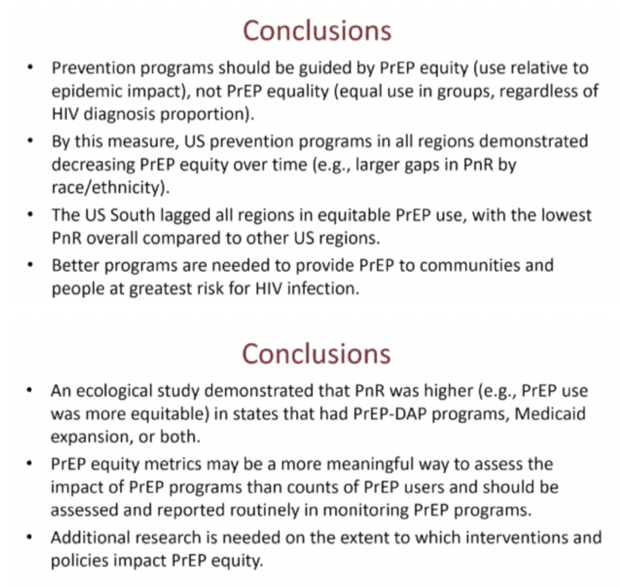
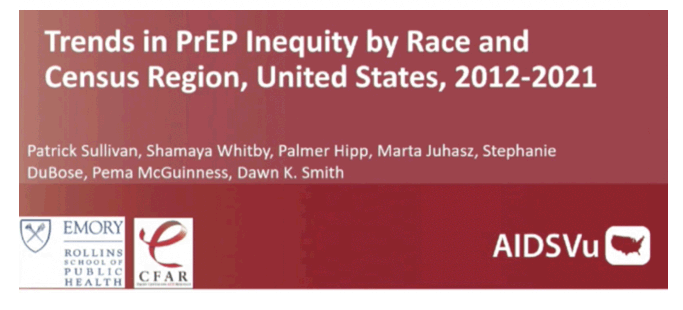
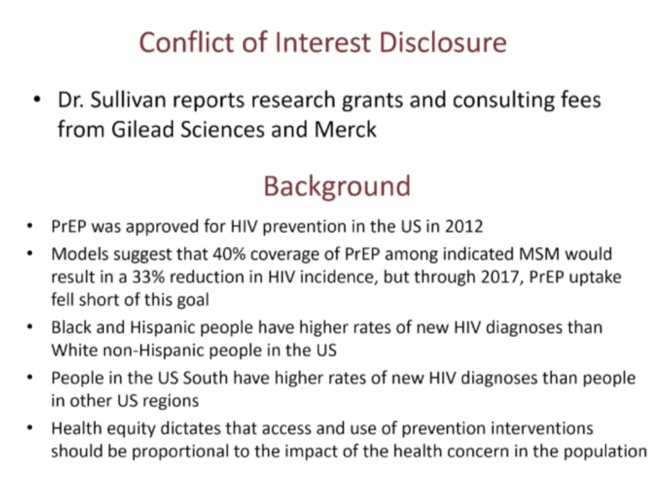
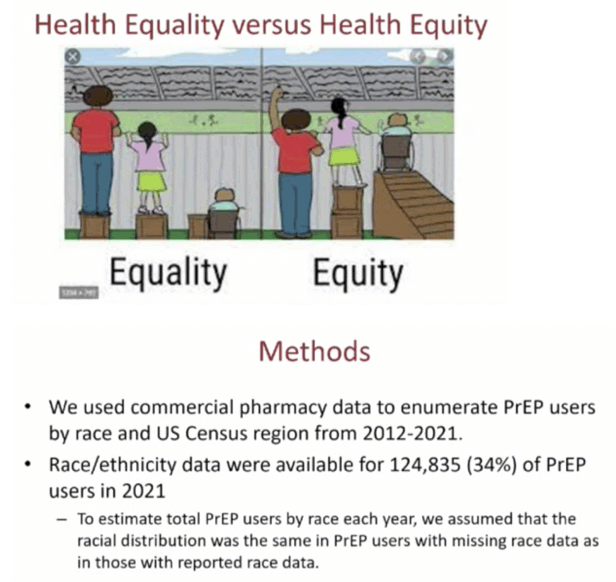
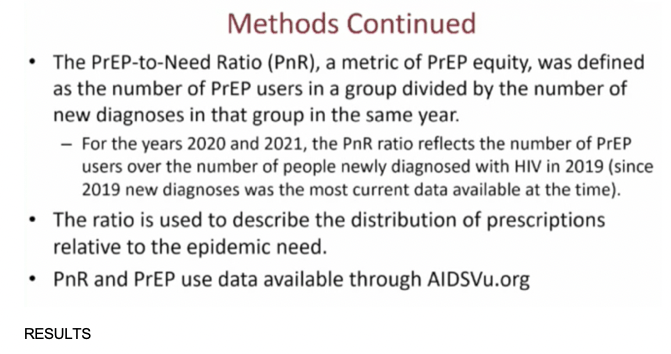
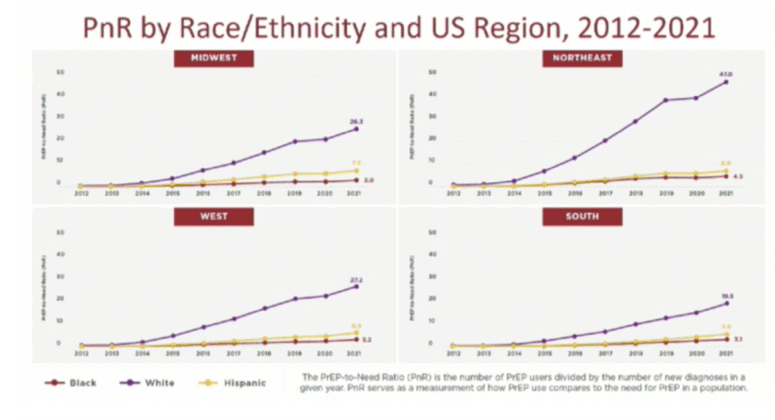
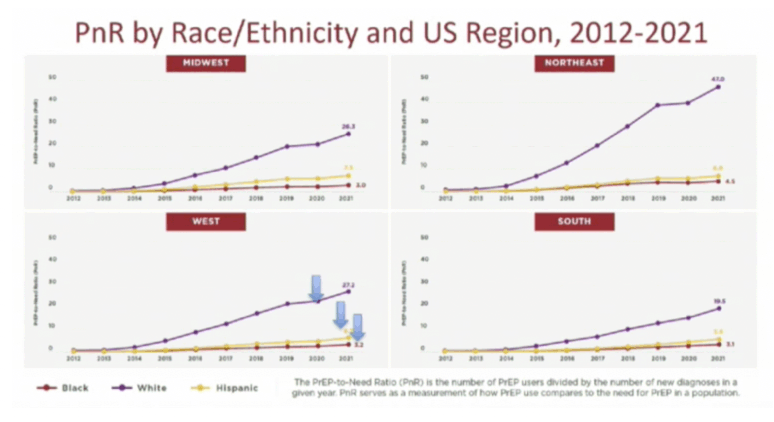
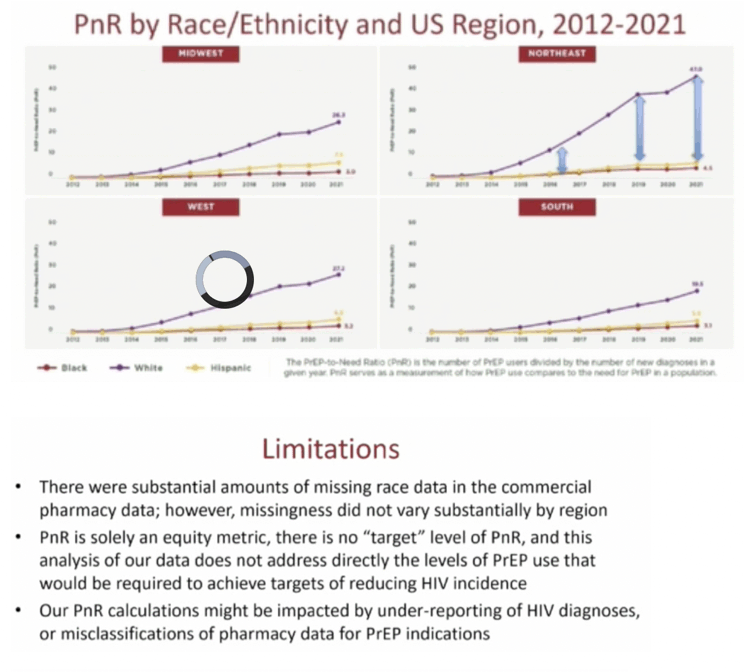
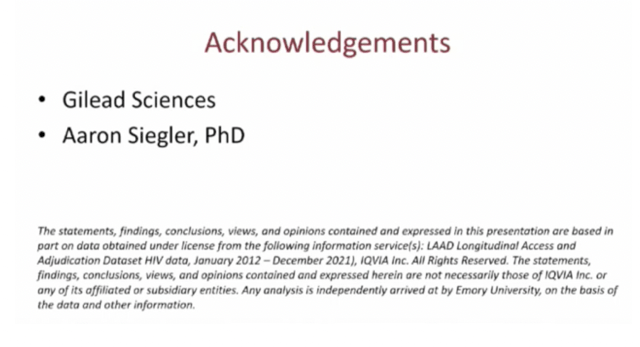
|
| |
|
 |
 |
|
|